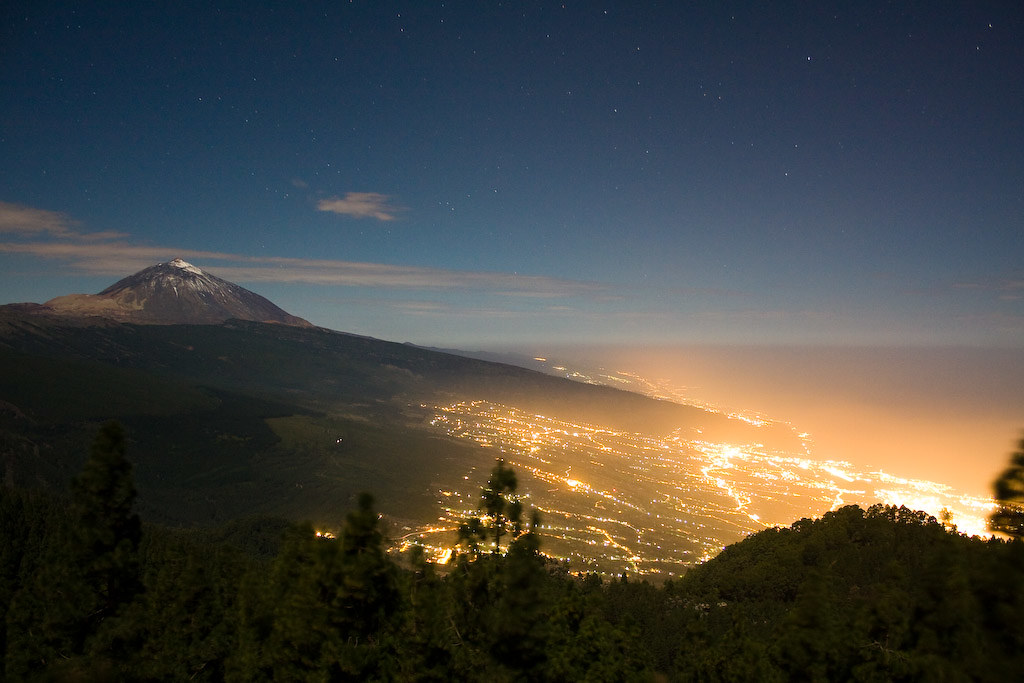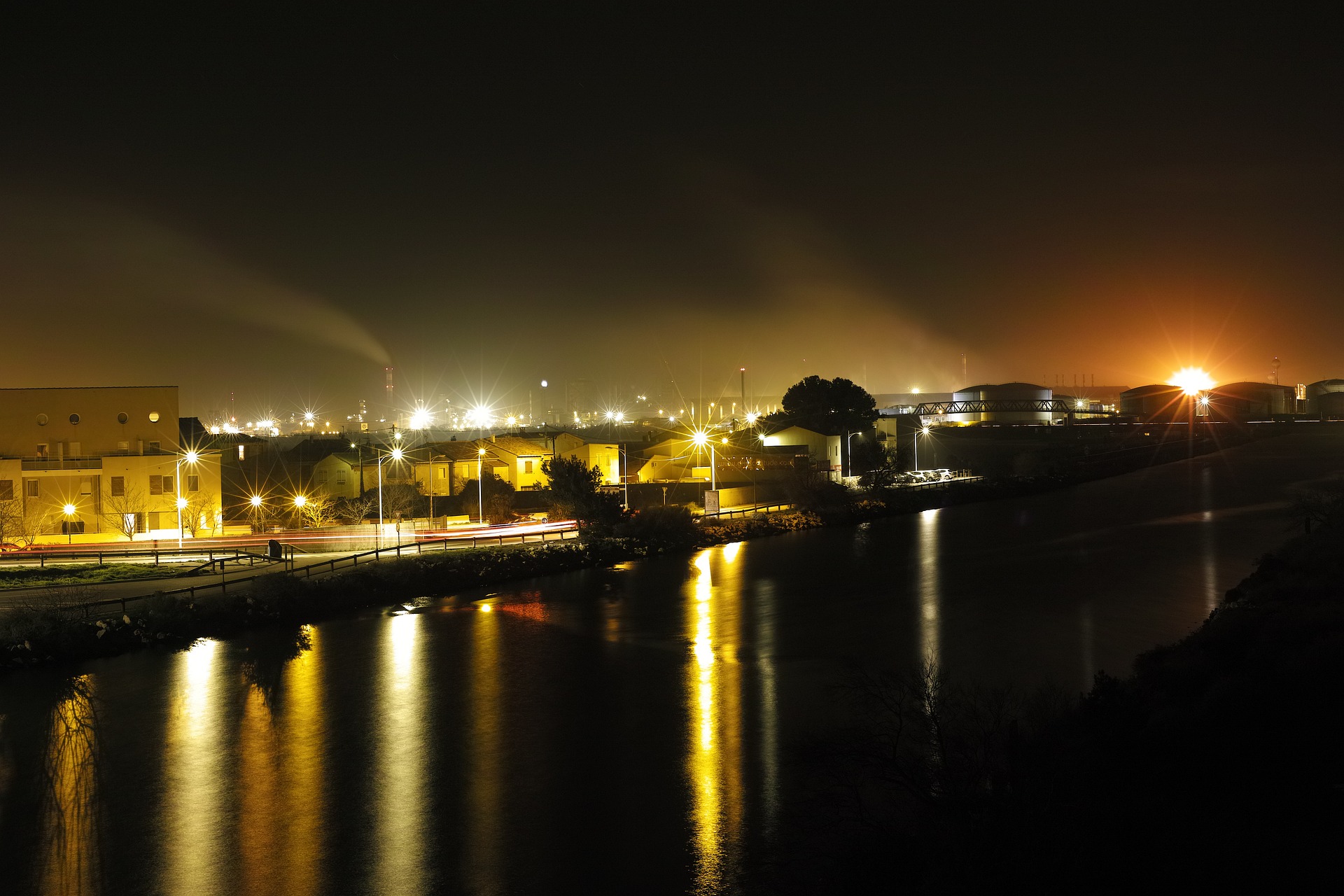Passion of the people – 1.7.1
What is light pollution?
The bright side of light
Light has fascinated people since time immemorial. Light has an emotional, aesthetic and soothing effect on us. Once our ancestors discovered the power of fire, they felt power over darkness. Yet for many thousands of years to come, they had to make do with light from the sun, moon, stars and fire. In the 19th century, inventors developed different kinds of light bulbs until Thomas Edison refined and patented an incandescent bulb in 1879. A game changer! The invention of electric light boosted humanity’s power over the night. People started to illuminate the Earth more and more; the planet has become ever brighter. Light no longer only serves people’s needs for safety and security. We use it for advertising and festive purposes, for traffic, industrial, and leisure sites. In many places, we can no longer see the starry sky.
What is light pollution?
Light pollution means too much light in the wrong place at the wrong time. It is the superimposition of natural light by artificial light. 99 percent of Europeans, North Americans and Japanese live under light-polluted skies! Light bells of large cities can be seen on the horizon hundreds of kilometres away. The main sources are lights from private companies, e.g. shops and façades, whereas public sources such as street lighting account for a smaller part. Only recently have we begun to fully discover and understand the negative impacts that our illuminated nights have on human health and on ecosystems.
Night on Earth?—Prime Time for animals and plants
Two out of three animal species on the planet are nocturnal. They rely on darkness and natural light from the moon and stars to orient themselves, move, reproduce, hunt or forage. Artificial light affects vital life functions, processes, and behaviour of animals. This can lead to the extinction of species. Light pollution amplifies biodiversity loss.
Bright homes—a danger to human health
Many of us spend many hours of our lives under artificial light. This distorts the production and balance of melatonin, known as “sleep hormone”, and thus our sleep-wake rhythm. Excessive use of artificial light in the evening and night hours can threaten our health. The most problematic light is blue light emitted by screens.
Further resources
Links below will redirect you to external websites. In accordance with the European data protection declarations, we would like to point out that by clicking on these links you may send data to external providers. We cannot prevent that.
Images
![]() Satellite images of Earth at night – NASA Earth Observatory images (NASA)
Satellite images of Earth at night – NASA Earth Observatory images (NASA)
![]() Lightpollutionmap (Falchi et al. 2016)
Lightpollutionmap (Falchi et al. 2016)
![]() Geographic patterns in changes in artificial lighting (Kyba et al. 2017)
Geographic patterns in changes in artificial lighting (Kyba et al. 2017)
![]() Artificial light at night: Potential sources, biodiversity impacts and responses are complex (Hölker et al. 2021)
Artificial light at night: Potential sources, biodiversity impacts and responses are complex (Hölker et al. 2021)
Videos
![]() Light Pollution 101 | National Geographic
Light Pollution 101 | National Geographic
![]() What is light pollution, and how could you help reducing it? (Dark Ranger)
What is light pollution, and how could you help reducing it? (Dark Ranger)
![]() The strange scourge of light pollution
The strange scourge of light pollution
![]() What is light pollution and how does it hurt our planet
What is light pollution and how does it hurt our planet
 Losing the Dark – Verlust unserer Nacht (IDA) (IDA)
Losing the Dark – Verlust unserer Nacht (IDA) (IDA)
 Licht in der Nacht: Die Folgen der Lichtverschmutzung für Mensch und Tier | Doku | DokThema | BR (IDA)
Licht in der Nacht: Die Folgen der Lichtverschmutzung für Mensch und Tier | Doku | DokThema | BR (IDA)
On line resources
![]()
 The definition of light pollution (Helle Not)
The definition of light pollution (Helle Not)
![]()
 The history on artificial light (Helle Not)
The history on artificial light (Helle Not)
![]()
 Verlust der Nacht / Loss of the Night: Interdisciplinary Research network
Verlust der Nacht / Loss of the Night: Interdisciplinary Research network
![]() Into the Night in the Kaunertal Valley (Online publication)
Into the Night in the Kaunertal Valley (Online publication)
![]() Map of light pollution world wide (Lightpollutiomap by Falchi et al. 2016)
Map of light pollution world wide (Lightpollutiomap by Falchi et al. 2016)
 Unterwegs in die Nacht im Kaunertal (Online publication)
Unterwegs in die Nacht im Kaunertal (Online publication)
 Article about „Vienna as exemplary lighting register“
Article about „Vienna as exemplary lighting register“
 Konzept zur nachtbezogenen Naturpädagogik (Online publication)
Konzept zur nachtbezogenen Naturpädagogik (Online publication)
Further readings
![]() Scientific paper: The new world atlas of artificial night sky brightness (Falchi et al. 2016)
Scientific paper: The new world atlas of artificial night sky brightness (Falchi et al. 2016)
![]() Scientific paper: 11 Pressing research questions on how light pollution affects biodiversity (Hölker et al. 2021)
Scientific paper: 11 Pressing research questions on how light pollution affects biodiversity (Hölker et al. 2021)
![]() Scientific paper: First Estimation of Global Trends in Nocturnal Power Emissions Reveals Acceleration of Light Pollution (Sánchez de Miguel et al. 2021)
Scientific paper: First Estimation of Global Trends in Nocturnal Power Emissions Reveals Acceleration of Light Pollution (Sánchez de Miguel et al. 2021)
Teaching Materials
![]()
 Teaching Material Kit on Light Pollution in 4 Languages (English, Spanish, German, Portuguese) (Stars4all)
Teaching Material Kit on Light Pollution in 4 Languages (English, Spanish, German, Portuguese) (Stars4all)
![]() Teaching material on light pollution in English and Spanish (Streetspectra)
Teaching material on light pollution in English and Spanish (Streetspectra)
![]() Globe at Night (Citizen Science Campaign)
Globe at Night (Citizen Science Campaign)
![]() Word Games and a Light Pollution Quiz
Word Games and a Light Pollution Quiz
For Kids
![]()
 Materials for young scientists: Quiz, Arts and craft corner, App and Exhibition for schools. (Loss of the Night network)
Materials for young scientists: Quiz, Arts and craft corner, App and Exhibition for schools. (Loss of the Night network)
![]() Dark Skies and Energy Education (Globe at Night)
Dark Skies and Energy Education (Globe at Night)
 Unterrichtsmaterialien für Schulen – “Tierprofi Wildtiere” (Die Umweltberatung)
Unterrichtsmaterialien für Schulen – “Tierprofi Wildtiere” (Die Umweltberatung)
 Unterrichtsmaterialien für Schulen – “Lichtverschmutzung” (Die Umweltberatung)
Unterrichtsmaterialien für Schulen – “Lichtverschmutzung” (Die Umweltberatung)
 Wissens- und Methodenbox „Kunstlicht, Nacht und Sternenhimmel“ (Naturfreunde)
Wissens- und Methodenbox „Kunstlicht, Nacht und Sternenhimmel“ (Naturfreunde)


